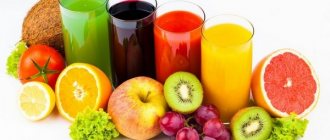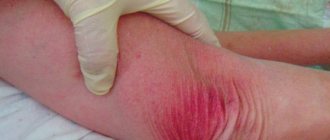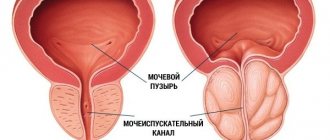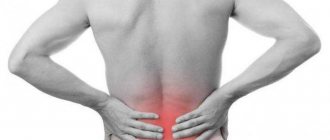REASONS FOR THE DEVELOPMENT OF HYPERVITAMINOSIS
The main cause of hypervitaminosis is outdated prejudices, due to which people take vitamins unnecessarily. Constant advertising of beneficial substances of synthetic origin, the lack of which frightens the population of the country, forces them to buy a lot of drugs and use them instead of healthy products. But does your body need it?
Since childhood, vitamins have been taken for prevention. Vitamin “C” – against viral diseases, vitamin “A” – against measles. No one conducts a preliminary consultation with a doctor, believing that the constant use of nutrients is salvation from all diseases. Guided by such an idea, it is very easy to develop hypervitaminosis.
The disease also occurs due to a number of reasons:
- errors by medical personnel;
- incorrectly prescribed injection drugs (intoxication);
- taking vitamin tablets in increased doses for a long time;
- poor diet;
- chronic diseases of various nature;
- age (both children and elderly people are affected by the disease).
The variety of reasons is the main incentive for preliminary consultation with a specialist. There is no need to diagnose yourself or rely on the advice of friends. Only a doctor should prescribe medications to maintain your health!
More about vitamin groups
There are fat-soluble and water-soluble vitamins. The first group is more difficult to remove from the body. For example, vitamins of groups K, E, D, A easily accumulate in adipose tissue and liver. Their reserves are too large, which causes hypervitaminosis. It is not easy to get rid of these substances, which contributes to the rapid development of surplus.
Water-soluble substances, in turn, enter the body with food or are produced by the liver independently. Intoxication with such vitamins is less dangerous. Excesses are eliminated naturally, and the necessary components are absorbed.
In children, hypervitaminosis develops due to a slow and unstable metabolism. The liver can hardly cope with overload, so the dosage of vitamins must be adjusted depending on the condition of the body. It will be significantly less than for adults.
As for intoxication with beneficial substances with one-sided nutrition, this rarely occurs. Try to balance your diet without relying on one type of food with a high content of active biological substances. If you ignore the rule, hypervitaminosis of several groups of vitamins at once is possible.
Description
Vitamins are organic substances needed by the body in very small quantities.
All vitamins are divided into two large groups: fat-soluble (A, D, E, K, F) and water-soluble (B1, B2, B3, B5, B6, B7, B8, B9, B12, C, N, P). It should be noted that vitamins A and D act like hormones and have significant toxicity. It is important to understand that vitamin deficiency, hypervitaminosis and hypovitaminosis are different concepts that need to be differentiated. Hypervitaminosis is a pathological condition in which an excess amount of certain vitamins enters the human body, as a result of which physiological processes are disrupted.
Fat-soluble vitamins – hypervitaminoses A, D, E, K and F.
Hypervitaminosis A.
Vitamin A, or antixerophthalmic factor, combines into its term all chemical compounds that are similar in nature: retinol, retinal, etc. It is found in large quantities in fish products, such as liver and oil of cod and halibut, a lot of it in cream and sour cream , carrots and tomatoes. A person should eat about 2-3 mg of vitamin per day; for children, pregnant and lactating women, the daily dose is much higher. An increase in retinol in the body to non-physiological levels (constant consumption of the vitamin over 3-4 mg per day) leads to the development of vitamin A hypervitaminosis. Increased doses of the vitamin lead to inhibition of osteogenic processes and increased chondrolysis processes, which can ultimately lead to pathologies of bone tissue. As a rule, the disease is associated either with excessive consumption of vitamin complexes and preparations, or with an excess of foods containing vitamin A.
Hypervitaminosis D.
Vitamin D, or calciferol, is a specific antirachitic steroid vitamin, which is formed in the majority (85%) in the skin under the influence of ultraviolet radiation. Hypervitaminosis D occurs due to excessive accumulation of calciferol in the body - over 30 mcg in children and over 15 mcg in adults. Due to excess, cell membranes are damaged and fat peroxidation increases.
Vitamin D hypervitaminosis can develop with excessive consumption of fish oil and eggs (in particular yolks). Due to the fact that calciferol is formed mainly under the influence of the sun, a decrease in the protective function of the skin and lack of tanning are a risk factor in the development of hypervitaminosis D in children and adults. With excessive consumption of liver of various types of fish, yeast-based products, hypervitaminosis D3 can develop.
Hypervitaminosis E
Vitamin E, or tocopherol, is an antioxidant and antihypoxic vitamin found in buckwheat porridge, nuts, cabbage, lard and meat products. An adequate dose of tocopherol per day is about 12 mg. Hypervitaminosis E occurs quite rarely and in cases of excessive intake of multivitamin complexes, which include tocopherol. Excessive tocopherol content in the body leads to activation of lipid oxidation and the formation of free radicals. It should be noted that vitamin E hypervitaminosis usually does not manifest itself in any way, since it is low-toxic in moderate doses. Hypo- and hypervitaminosis of tocopherol are very similar in their clinical picture and can manifest themselves almost identically, which at first can lead to diagnostic errors.
Hypervitaminosis K
Vitamin K, or quinone, is a specific antihemorrhagic vitamin with a very low daily requirement. Only about 0.1 mg is needed per day for both adults and children. A lot of quinone is found in rowan, cabbage and spinach. Vitamin K hypervitaminosis has not been described in adults (only a few cases have been described in which increased blood clotting occurred against the background of an increased vitamin content), unlike in newborn children. An increase in quinones in the body leads to a decrease in hemoglobin, inhibition of erythrocyte growth and increases the amount of prothrombin. This leads to an increased content of methemoglobin and hemolysis (destruction) of red blood cells. Symptoms in children in the first days of life are most pronounced in premature infants.
Hypervitaminosis F
Vitamin F, being by its nature unsaturated fatty acids (UFA), is not independently synthesized in the human body. Vitamin F includes two very important acids for the body: linolenic acid and linoleic acid. You need at least 10 grams of vitamin per day, with 6-7 g coming from linolenic acid. Excessive intake (over 15 g) of vitamin F leads to hypervitaminosis, the consequences of which can be dangerous not only for individual organs and systems (stomach, joints, respiratory system), but also for the entire body as a whole. The highest content of EFAs is found in flaxseed oil, 2 times less is found in fish oil.
Water-soluble vitamins
Hypervitaminosis C
Vitamin C (ascorbic acid) is an antiscorbutic (antiscorbutic) and antioxidant vitamin that is not synthesized in the body and must be replenished daily. The consequences of hypovitaminosis and hypervitaminosis C are significantly different due to the fact that even a slight deficiency of ascorbic acid leads to severe symptoms, and an excess of the vitamin does not always appear and often only with chronic overuse. Ascorbic acid hypervitaminosis occurs with constant consumption of vitamin C in excess of 100 mg per day. The optimal daily dose of the vitamin is on average 80 mg/day. Severe symptoms occur with hypervitaminosis in children (leading to diabetes mellitus).
Hypervitaminosis B1
Vitamin B1, or thiamine, is an antineuritis vitamin that is easily excreted from the body in urine when in excess. Hypervitaminosis of vitamin B1 is extremely rare and is practically not described in the medical literature. Only a few foreign authors describe hypervitaminosis B1 in connection with increased sensitivity in people to whom thiamine was administered parenterally (intravenously). Excess thiamine leads to inhibition of cholinesterase and also damages mast cells, leading to the development of allergic reactions. Also, an increased content of thiamine in the body leads to disruption of the hematopoietic system. The daily requirement for vitamin B1 is 1-1.6 mg, and the largest amount is found in yeast, wheat bread, beans and soybeans. It should be remembered that excessive consumption of yeast can lead to gouty arthritis, so they are not used as a source for hypovitaminosis.
Hypervitaminosis B2
Vitamin B2 (also called growth vitamin, or riboflavin) is an important biological substance, acute deficiency of which can be fatal. Hypervitaminosis B2 is also not found in the literature, which is explained by its rapid elimination from the body by urine (riboflavin does not accumulate in tissues in excess). The daily dose is 2-4 mg, and the vitamin is contained in cottage cheese, animal liver (chicken, pork) and milk.
Hypervitaminosis B3
Vitamin B3, better known as pantothenic acid, is an important component in maintaining intestinal microflora. What is characteristic is that hypervitaminosis of pantothenic acid does not occur, and even in seemingly toxic doses no manifestations occur. No more than 20 mg is needed per day, which a person receives along with plant and animal foods.
Hypervitaminosis B6
Vitamin B6 (or pyridoxine, adermin) is a so-called antidermatitis vitamin, which is produced in sufficient quantities by the microflora of the large intestine. The normal daily dose is considered to be about 5 mg, although in athletes and pregnant women, as well as people with excessive protein in their diet, the daily requirement may increase. Hypervitaminosis B6 develops in case of long-term use of high doses of pyridoxine (over 300 mg). It is found in yeast, legumes, cereal grains and bread.
Hypervitaminosis B7
Vitamin B7 (vitamin H), or biotin, is an important component of carbohydrate metabolism, starting the processes of breakdown and utilization of glucose. Hypervitaminosis occurs only in the case of individual characteristics of the body, when there is increased sensitivity to biotin, since even ultra-high doses (over 30 mcg/day with a norm of 25 mcg/day) of biotin do not cause any side effects.
Hypervitaminosis B8
Vitamin B8, the so-called inositol, found in all foods (meat, vegetables, dairy products). Hypervitaminosis B8 occurs when its daily requirement exceeds 10-15 g (with the norm being up to 2 grams) and is manifested by allergic reactions only in case of individual intolerance (an extremely rare pathology). Otherwise, inositol is not toxic to the body in healthy people.
Hypervitaminosis B9
Vitamin B9 - folic acid (folacin) is a vital micronutrient necessary for the normal functioning of the immune system and blood system. Folacin is not formed in the body, so it is constantly required to be taken with food (strawberries, tomatoes, cabbage). The daily dose at different periods (pregnancy, poor nutrition) of a person’s life can vary, averaging 150 mcg per day). An excess of foods containing folacin in the diet leads to the development of hypervitaminosis B9, causing a similar effect to the action of histamine.
Hypervitaminosis B12
Vitamin B12 (or cobalamin) is an antianemic vitamin, which is found in large quantities in liver and fish (salmon, sturgeon, sardine), and less in milk. 5 mcg per day is enough to maintain the normal functioning of all body systems. As for excessive intake of cobalamin, the so-called hypervitaminosis B12 is only conditional, since cobalamin is non-toxic and is easily excreted by the kidneys in the urine. However, we should not forget about the possible individual reaction to the administration of cobalamin with the development of allergic reactions and the occurrence of natural hypervitaminosis of vitamin B12
Hypervitaminosis P (routine)
Vitamin P - permeability factor, or rutin - includes a group of bioflavonoids, the most active of which are catechins and quercetin. Hypervitaminosis P causes decreased platelet aggregation as a result of inhibition of active phosphodiesterase. On average, a person needs 80 mg per day, and rutin is found in all products (especially a lot in lemons, oranges and grapes).
Hypervitaminosis PP (vitamin B5)
Vitamin PP (or niacin, nicotinamide) is an anti-pellagric vitamin that can be synthesized in small quantities (no more than 3% of the daily requirement) in the human body. The daily requirement is about 22 mg. Niacin is found in dairy and meat products, rice grains, and potatoes. Hypervitaminosis PP develops when it is consumed excessively with vitamin complexes or during treatment with high doses of nicotinic acid, manifesting itself in various kinds of allergic reactions. The development of hypervitaminosis PP is also noted with individual sensitivity to niacin.
Hypervitaminosis N
Vitamin N, better known as lipoic acid, has antioxidant properties and has recently begun to be actively used as a cancer preventative (suppressing the activity of genes damaged by free radicals). Hypervitaminosis N, as well as hypovitaminosis, do not occur due to the scanty toxicity of lipoic acid. No more than 3 mg is needed per day, and the highest content of the vitamin is found in meat and milk.
WHY IS OVEREXCESS OF VITAMINS DANGEROUS?
Hypervitaminosis can be acute or chronic. The acute form develops over several days or hours, depending on the dose of vitamins entering the body. Symptoms depend on the type of hypervitaminosis in the group, which is discussed in detail below. General signs of the disease are:
- weakness, nausea and dizziness;
- digestive disorders;
- tremor, muscle tremors;
- swelling.
Chronic hypervitaminosis develops longer – over the course of months. The reason for its occurrence is the systematic excess and consumption of the required dose of vitamins. Diagnosing the chronic form is more difficult. This requires laboratory analysis of urine and blood.
Medicines
Photo: thyro.info
The general treatment regimen for poisoning due to hypervitaminosis includes the following groups of medications:
- Crystalloid infusion solutions . Isotonic sodium chloride solution or Locke's solution is used to “dilute” the blood and reduce the total concentration of the vitamin.
- Diuretics . Prescribed immediately after infusions of the above solutions. The goal is to remove excess fluid from the body along with the vitamin.
- Glucocorticosteroids . Indicated in difficult and life-threatening situations. More effective synthetic agents are used more often.
- Enterosorbents . They bind vitamins in the gastrointestinal tract. Excess compounds in the stomach and intestines are not absorbed into the blood, but combine with enterosorbents and are excreted in feces.
Specific drug treatment is applicable for hypervitaminosis D. The following medications are indicated:
- Vitamin A . It is an antagonist of vitamin D, reducing its content in the body.
- Vitamin C (ascorbic acid). Like vitamin A, it has an antitoxic effect against calciferol.
- Cholestyramine . It prevents vitamin D from being absorbed in the intestines, which eliminates the symptoms of hypervitaminosis.
SYMPTOMS AND CONSEQUENCES OF HYPERVITAMINOSIS
The type of hypervitaminosis depends on the group of vitamins, a surplus of which is observed in the body. Depending on this, a number of characteristic symptoms vary, allowing an accurate diagnosis to be made in order to begin treatment.
Hypervitaminosis "A"
This is the most classic example of a disease that was first described back in 1597. Almost 90% of the vitamin accumulates in the liver; neutralization occurs slowly. In 21 days, only 34% of the substance leaves the body.
Symptoms of the acute form:
- nausea;
- redness and inflammation of the eye cornea;
- lack of appetite;
- aching joints.
In the chronic form of hypervitaminosis “A” the following is observed:
- decreased visual acuity;
- increased intracranial pressure;
- high cholesterol;
- fragility of nail plates;
- hair loss.
In advanced stages, a person suffers from brittle bones, problems with the liver and kidneys. The disease is especially dangerous for pregnant women, as it leads to congenital deformities of the fetus.
Hypervitaminosis "B"
Occurs less frequently than the previous type of disease. As a rule, hypervitaminosis “B” occurs due to an overdose of injectable vitamin preparations.
Symptoms:
- loss of sensation in fingers and toes;
- dermatitis in the corners of the mouth;
- cramps in the calf muscles;
- thrombosis in blood vessels;
- impaired renal function, pernicious anemia;
- spinal cord damage (in severe cases).
More often the disease occurs in an acute form. Symptoms include widespread redness of the skin, diarrhea and nausea.
Hypervitaminosis "D"
As a rule, the disease is provoked by taking calciferols - synthetic vitamin D. This type of hypervitaminosis is more common in young children and the elderly.
Symptoms:
- lack of appetite, severe and constant nausea;
- high blood pressure;
- sudden weight loss;
- increased volume of urine output;
- convulsions;
- increased fatigue, constant headaches, depression.
Elderly people may suffer from jaundice, tremors, cardiomyopathy, and joint pain. Symptoms of the acute form include severe joint pain, bruising, and severe dehydration.
Hypervitaminosis "E"
Vitamin “E” accumulates quickly, but is difficult to remove from the body. The symptoms of this type of hypervitaminosis are general, so doctors have to talk with the patient to make an accurate diagnosis.
Symptoms:
- feeling of weakness;
- headache;
- double vision;
- loose stool.
Due to hypervitaminosis “E”, fat-soluble vitamins begin to be absorbed worse. Because of this, the risk of hypovitaminosis “A” and “E” increases.
Hypervitaminosis "C"
The disease poses the greatest danger to people suffering from cholelithiasis or urolithiasis.
Symptoms:
- decreased clarity of vision;
- insomnia;
- the appearance of a tendency to thrombosis;
- heart pathologies;
- deterioration of capillary permeability.
Other types of hypervitaminosis are much less common, but it is also worth knowing about them.
Other hypervitaminosis
A surplus of rutin (hypervitaminosis “P”) leads to increased blood clotting. Hypervitaminosis "K", in turn, is more common in newborns when an excessive dose of the drug "Vikasol" or "Menadione" is administered. Symptoms in adults are expressed in the form of increased blood viscosity, predisposition to thrombosis, migraines and varicose veins.
Vitamin C
The most striking example of vitamin deficiency is the diagnosis of scurvy. This "sailor's disease" has in the past been associated with vitamin C deficiency due to poor diet. Today it is quite difficult to reach such a state, but first things first.
Vitamin C is responsible for the body's protective functions. It enhances the immune response in response to a foreign pathogen in the body, participates in the growth and development of tissues, and promotes wound healing.
The richest sources of vitamin C are: greens, rose hips, green vegetables, citrus fruits, tomatoes, potatoes.
A deficiency of this vitamin is manifested by hair loss, dry and pale skin, inflammatory processes in the oral cavity and bleeding gums, increased fatigue, brittle bones, increased susceptibility to viruses and infections and other consequences.
The established myth about the need to take ascorbic acid in almost any quantity can lead to an excess of the vitamin, which is no less dangerous than a deficiency. It is often accompanied by similar symptoms caused by a lack of vitamin, to which are also added acute problems with the gastrointestinal tract and a predisposition to the formation of kidney stones. However, all these signs can appear in a person who has really “too much” of vitamin C from a jar. In general, the body tries to eliminate excess vitamins on its own through feces and urine.
TREATMENT AND PREVENTION
Remember that treatment of hypervitaminosis must be carried out only under the supervision of a doctor! The specialist determines the cause of the disease based on the patient’s test data. Therapy consists of three main points that promote a speedy recovery.
First, the intake of excess vitamin is reduced to the required daily dose. This is achieved by adjusting a person’s diet and following a diet.
Next, symptomatic treatment begins. Painful or allergic reactions of the body to hypervitaminosis are eliminated. If you carry out only symptomatic therapy without reducing the supply of vitamins from outside, the disease will progress!
The last stage is detoxification. The body is cleansed of excess of certain substances, since a surplus of vitamins is similar to poisoning.
It is much easier to prevent a disease than to treat it. Carefully monitor the dosage of vitamins you take, having previously agreed on prevention with a specialist. Hypervitaminosis threatens all people, depending on age groups, so take it seriously!
Folk remedies
Photo: shlakov.net
If there are signs of poisoning, immediate gastric lavage is necessary, followed by drinking plenty of fluids. Pure water and weak tea will do. Unpleasant symptoms can cause insomnia and irritability. In such cases, valerian extract or chamomile decoction are recommended. Tea with lemon balm is useful - a drink that will help you relax and calm down. The use of traditional methods of treatment is allowed only in consultation with a doctor .
The information is for reference only and is not a guide to action. Do not self-medicate. At the first symptoms of the disease, consult a doctor.
Increased need for vitamin B2
Among men, more vitamin B2 is required by those who professionally or simply engage in intense sports, and also consume increased amounts of protein foods in order to increase muscle growth. The additional presence of protein in the diet creates the need to increase the dosage of incoming vitamin B2.
In women, the presence of vitamin B2 in food should be increased if they are expecting a child or are breastfeeding.
Persons of both sexes require a diet enriched with riboflavin if they often suffer from stress, suffer from anemia, or diseases of the digestive system.
Methods of administration, dosage and interaction of B2 with other trace elements
The average daily requirement of the body for vitamin B2:
- Men – 1.6-1.8 mg;
- Women – 1.2-1.3 mg;
- Teenagers – 1.4-1.8 mg;
- During pregnancy and breastfeeding – 2.2-2.4 mg.
It is extremely important not to take supplements that contain vitamin B2 on an empty stomach. This reduces its effectiveness by 2-3 times. Take the tablets only during meals or immediately after meals.
It is optimal to take the substance in courses, from 1 to 2 months, with a subsequent break of 2 to 4 weeks. During heavy training, rest time can be reduced to 1-2 weeks.
Also, the benefits of vitamin B2 can be increased or decreased when interacting with various substances. Therefore, try to include or exclude joint reception. Taken together to increase the effectiveness of riboflavin:
- Pyridoxine;
- Folic acid;
- Thyroidin;
- Erythromycin;
- A nicotinic acid;
- Zinc;
- Iron.
Compounds that destroy the substance and make vitamin B2 ineffective:
- Tranquilizers, antidepressants;
- Neuroleptics;
- Diuretics;
- Boric acid.










